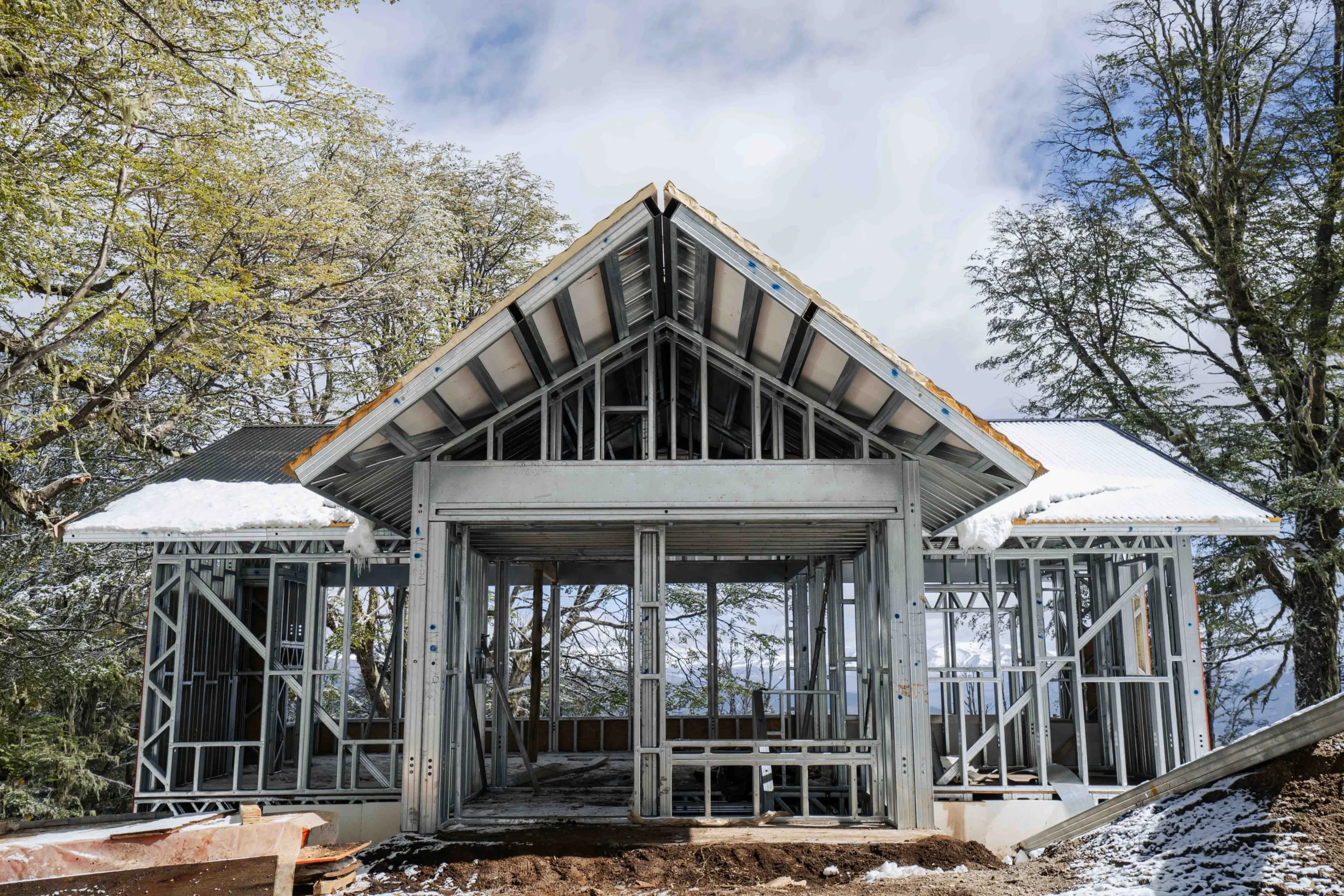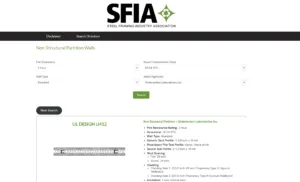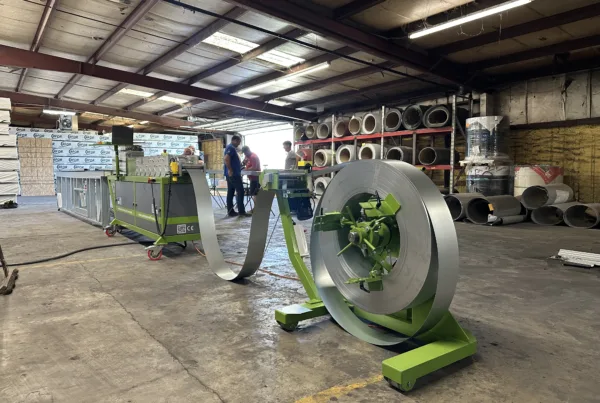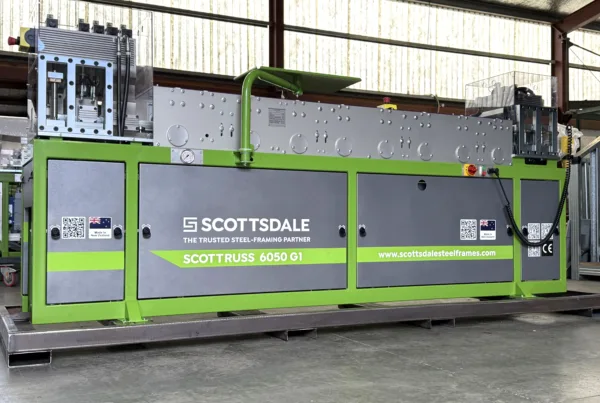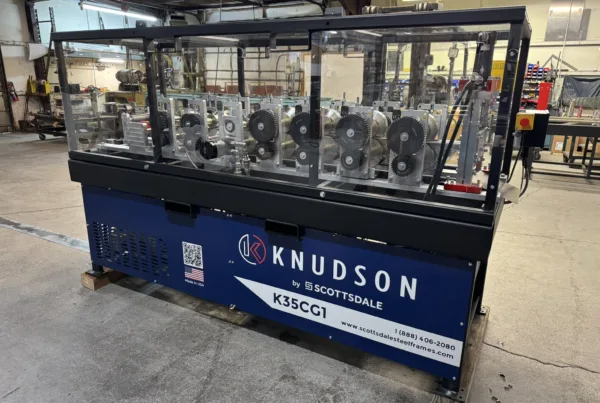In modern construction, cold-formed steel assemblies and the data that guide their performance play a vital role in safety, comfort, and compliance. Whether designing CFS wall assemblies, CFS floor assemblies, or CFS roof assemblies, every tested system contributes to creating safer, quieter, and more efficient buildings. Verified cold-formed steel fire and acoustic data ensure that both residential CFS framing and light-commercial CFS framing meet standards for fire protection and sound performance. These cold-formed steel solutions provide structural reliability while offering architects, designers, and engineers the flexibility to achieve their performance goals using data-driven tools.
The Steel Framing Industry Association (SFIA) has developed a Fire & Acoustic Data for Cold-Formed Steel Floor, Wall & Roof Assemblies tool to simplify the selection and specification process. Here, we explore the importance of the assemblies, the database, and the available roll forming solutions offering fire safety and acoustic performance.
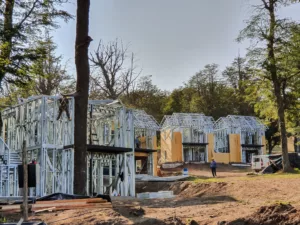
What Are Fire Assemblies in Cold-Formed Steel Construction?
Cold-formed steel assemblies are carefully tested configurations that define how walls, floors, and roofs behave when exposed to fire. A CFS wall assembly or CFS floor assembly typically includes layers such as gypsum board, insulation, and steel framing components, all tested to determine their fire resistance.
Fire testing is performed in controlled laboratory conditions, where an assembly is subjected to high temperatures until failure occurs, either through structural compromise or heat transfer. A 2-hour fire rating indicates that the cold-formed steel assembly can resist fire exposure for at least two hours without losing integrity or allowing heat to pass through.
The current database includes a variety of CFS wall assemblies, such as:
- Area separation fire walls
- Chase walls
- Exterior standard walls
- Shaft walls
- Standard walls
These assemblies are essential for both residential CFS framing and light-commercial CFS framing, helping ensure compliance with building codes and safety standards.
What Are Acoustic Assemblies in Cold-Formed Steel Construction?
Acoustic assemblies determine how well a wall, floor, or ceiling system blocks or absorbs sound. Just as cold-formed steel assemblies are tested for fire performance, they are also evaluated for sound transmission. In laboratory testing, sound waves are projected through the assembly, and the difference in decibel levels between the source and receiving rooms determines the Sound Transmission Class (STC).
An STC rating of 50–54 means that the CFS assembly provides strong sound insulation, meaning normal conversation and television noise are significantly reduced. For both residential CFS framing and light-commercial CFS framing, these acoustic assemblies create quieter and more comfortable spaces, particularly in multi-unit or commercial environments.
Recognized Testing Agencies for Cold-Formed Steel Assemblies
Testing for cold-formed steel fire and acoustic data is conducted by accredited laboratories to ensure precision, repeatability, and compliance. The database includes assemblies tested by the following agencies (in alphabetical order):
- Factory Mutual
- Gypsum Association
- Intertek Testing Services NA Inc.
- National Research Council of Canada
- Underwriters Laboratories Inc.
- Underwriters Laboratories of Canada
- University of California
These agencies contribute validated, high-quality cold-formed steel fire and acoustic data that support the design of CFS wall assemblies, CFS floor assemblies, and CFS roof assemblies across the globe.
Why Fire and Acoustic Assemblies Are Important
Fire- and sound-rated cold-formed steel assemblies directly affect building safety, performance, and livability. For residential CFS framing, they ensure occupants have sufficient evacuation time and enjoy quieter spaces. For light-commercial CFS framing, they reduce liability risks, improve insurance compliance, and enhance tenant satisfaction.
It’s important to always refer to the full description of each assembly in the cold-formed steel fire and acoustic data database. Small variations in steel gauge, insulation type, or sheathing can significantly influence fire-resistance and sound ratings.
How to Use the Cold-Formed Steel Fire and Acoustic Data Tool
The Cold-Formed Steel Fire and Acoustic Data Directory is a comprehensive resource that allows users to search, filter, and compare cold-formed steel assemblies by performance characteristics. Architects, designers, and engineers can filter by:
- Fire rating
- Acoustic rating
- Wall assembly type
- Testing agencies
By going to the assembly source and reviewing the details within each listing, professionals can quickly identify the appropriate CFS wall assemblies, CFS floor assemblies, and CFS roof assemblies that meet both fire and acoustic requirements. This simplifies the design process and ensures that each cold-formed steel assembly selected aligns with project specifications and local code standards.
Roll Forming Solutions for Fire-Rated and Sound-Rated Assemblies
Once the desired cold-formed steel assemblies are identified, choosing the right roll forming solution is the next step. Scottsdale Construction Systems provides advanced roll forming machines tailored for producing precise CFS wall assemblies, CFS roof assemblies, and CFS floor assemblies components.
- Scotpanel Roll Forming Machines: Ideal for single-profile production of cold-formed steel members used in standard wall assemblies.
- KFS Framemaker Roll Forming Machines: High-performance, multi-profile equipment designed for structural cold-formed steel assemblies that require varying gauges and enhanced fire or acoustic ratings.
- KFD Framemaker Roll Forming Machines: Multi-profile systems suited for flexible non-structural residential CFS framing and light-commercial CFS framing, capable of fabricating custom configurations.
Choosing the right roll forming machine depends on the project’s required fire and acoustic performance. Within the database, review the assembly’s wall thickness and framing member specifications in the cold-formed steel fire and acoustic data section to determine which machine configuration aligns best.
Cold-Formed Steel Fire and Acoustic Data for Safer, Quieter Buildings
With reliable cold-formed steel fire and acoustic data, designers and engineers can create buildings that balance strength, safety, and comfort. Tested and verified cold-formed steel assemblies, including CFS wall assemblies, CFS floor assemblies, and CFS roof assemblies, are the foundation of high-performing residential CFS framing and light-commercial CFS framing. Supported by accredited testing agencies and precision roll forming technology like Scotpanel, KFS Framemaker, and KFD Framemaker, today’s cold-formed steel industry provides the tools and data needed for smarter, safer, and quieter construction.
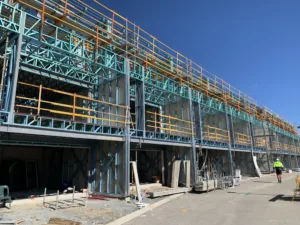
Additional Scottsdale Roll Forming Solutions and Resources
- Blog – The Latest in Fire Performance of Cold-Formed Steel Structures
- Blog – Furring Channels: Ultimate Guide to Benefits and Uses
- Blog – Staggering Noggings in Cold-Formed Steel Wall Panels
- Video – Steel Framing Fabrication Process with Scotpanel and Scottruss Roll Forming Systems
- Video – How to Make a CFS Wall Panel Using Scotpanel 5090/7090 Roll Forming Machine
- Financial Services
To learn more about Scottsdale’s roll forming solutions and steel framing ecosystem, visit us at www.scottsdalesteelframes.com, call us at +1 (888) 406-2080, or email us at rollformers@scottsdalesteelframes.info.
